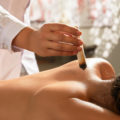Tea lovers and teatime

Last year, we wrote a great story about coffee in our blog and found out that it’s healthier than we think. We found out that in Europe, Luxembourg is the leading consumer of coffee, closely followed by the Netherlands, Scandinavians, and Austrians.
Then come the Germans. The German Coffee Association reported that each German per capita consumes almost 150 litres per year. This makes coffee the most widely consumed drink in Germany, ahead of water, beer, and wine. Germany has long been the country of filter coffee. Now we’re getting to the bottom of the tea boom.
The tea boom
“Welt online” now displays the headline serious coffee competition? Germany is suddenly experiencing a tea boom. Germans are now said to be drinking 70 litres of tea per capita.
Tea was discovered in China almost 5,000 years ago. However, it only reached Europe around 400 years ago. Today, tea is the most popular drink worldwide after water.
Discovered by accident more than 5,000 years ago
Tea is thought to have been discovered by the Chinese emperor, Shennong. Back then, around (3,000 years B.C.), the Chinese would boil drinking water and flavour it with herbal additives.
According to legend, one day the leaves of a nearby tree in the palace gardens fell into the emperor’s drinking water. The emperor tasted the mixture and enjoyed the pleasant, herbal flavour and beneficial effect of the accidental drink. Unknown to him, a tea tree had been growing there.
In the 6th century, Buddhist Monks brought the tea to Japan and formed the basis for the detailed strict, Japanese tea ceremony.
The first tea arrived in Europe 400 years ago
It was not, as commonly believed, the English who brought tea to Europe, but the Dutch. In 1610, sailors with the Dutch East India Company acquired Japanese and Chinese tea from Portuguese traders in Java and brought it back to Amsterdam. The tea only arrived in England in 1662: The Portuguese princess Catherine of Braganza, who was married to King Charles II of England, brought it with her as a gift. While the tea was initially only popular in the royal court, it soon gained popularity throughout the country. In 1706, London opened the first official tea house in Europe.
It was only in 1699 that tea trading was passed over to the British East India Company, which held the monopoly for a good century.
East Frisian tea culture now an intangible cultural heritage
As early as the mid-17th century, East Frisians learned to appreciate the tea of their Dutch neighbours. Meanwhile, this practice was placed on the list of intangible cultural heritage by the German UNESCO committee. Until four years ago, East Frisians had the largest tea consumption per capita worldwide: On average, East Frisians drink 300 litres of tea each year.
Hamburg is now the tea metropolis of continental Europe
The tea arrived in Bremen and Hamburg from East Frisia. Today, thanks to its port, Hamburg is now the hub of the continental European tea trade.
British tea rules
Since importing tea was very expense, the luxurious enjoyment of tea needed to be celebrated accordingly. The British therefore set out specific rules on how to hold a tea ceremony. Tea was typically drunk at five o’ clock in the afternoon together with family and guests in the lounge, where best clothes were worn for the occasion.
British tea is typically served with lemon or milk. When drinking, the lower rim of the cup is placed on the lip and the tea lightly sipped. This still remains a highly esteemed practice in high society today. The British generally drink tea unsweetened in order to better appreciate its aroma.
Teatime is a symbol of English culture and is known worldwide. However, the British do not use the term ‘teatime’ as tea is drunk at all times of day in the United Kingdom.
Early morning tea is drunk in bed, breakfast tea at breakfast and elevenses before lunch. Afternoon tea has gained worldwide fame. When talking about teatime, this typically refers to this traditional afternoon tea.
Afternoon tea typically takes place between three and five o’clock in the afternoon, which is why it is also referred to as five o’ clock tea. The tradition of afternoon tea harks back to a particular woman: Lady Bedford, one of Queen Victoria’s ladies in waiting, is thought to have been the inventor.
Black tea is a favourite among Europeans
Black tea is one of the most popular varieties of tea in Europe. Drinking black tea is particularly popular in England as well as in Russia. To produce black tea, the leaves are air dried giving it its dark colour, unlike green tea, where the tea leaves are steamed.
In Asia, black tea is also called red tea, which is simply another way of producing tea. It is not its own variety of tea tree but involves special treatment of the tea leaves as all teas are produced from the leaves of the tea tree. Different flavours are only produced through the way in which the tea leaves are processed. Black tea is achieved by air drying the leaves, which oxidises them.
Tea varieties
Six different varieties of tea can be obtained from the tea tree: Black tea, green tea, yellow tea, white tea, oolong tea and pu-ehr tea. The 3,000 different types arise from countless variations of these six original varieties.
Nowadays, tea is the most popular drink on the planet, with an annual global production of 2.9 million tonnes of tea. The choice is huge and the tea market offers something for every taste. Green tea is one of the healthiest varieties worldwide. It is particularly popular as a replacement for coffee due to its high caffeine content.
Matcha is a special variety of green tea. It is considered the best and healthiest of all the teas. Matcha contains lots of vitamins and nutrients as well as the highest concentration of antioxidants, which are good for the health. Gyokuro from Japan is one of the best green teas around.
It is cultivated on the island of Kyushu in southern Japan and is a genuine Japanese specialty. Gyokuro is one of the most treasured green teas in the world. This tea is only harvested in small quantities in spring, making it one of the most expensive tea varieties in the world. Sencha tea is one of the most popular and frequently drunk green teas in Japan and worldwide.
Other popular and healthy types of tea include oolong tea from China, bracha tea, Turkish apple tea, Indian spiced tea (yogi tea), white tea, pu-ehr tea, peppermint tea, camomile tea, ginger tea, fruit teas and herbal teas.
Not to mention iced tea as a refreshing drink. Ginger and camomile tea are particularly good at reducing inflammation. Tea can alleviate colds and pains as well as stress and sleep disorders in a natural way.
So, time to head to the sofa with a nice, delicious cup of tea. Tea is particularly beneficial and healthy during cold and wet times of year.




